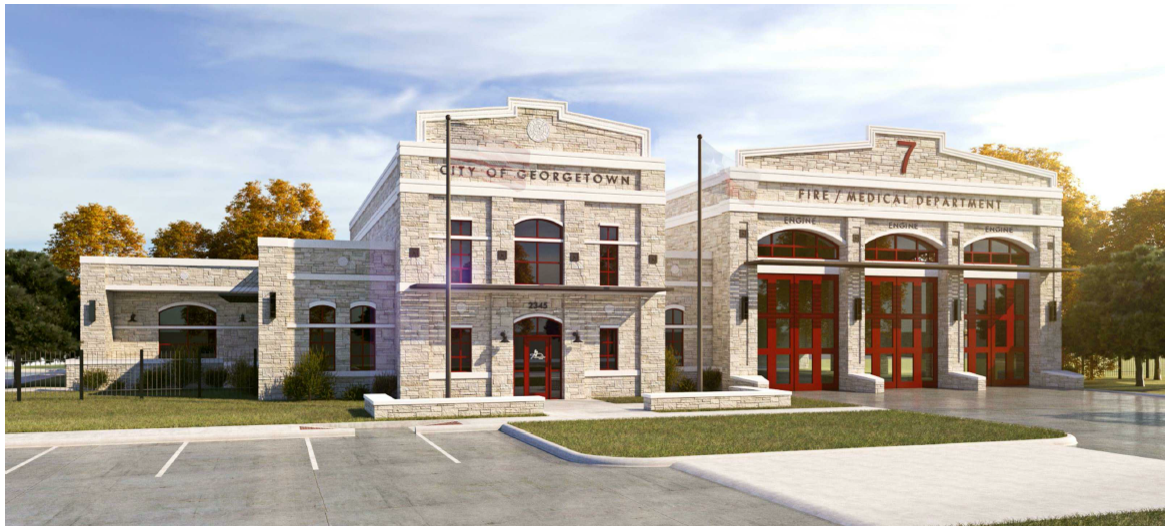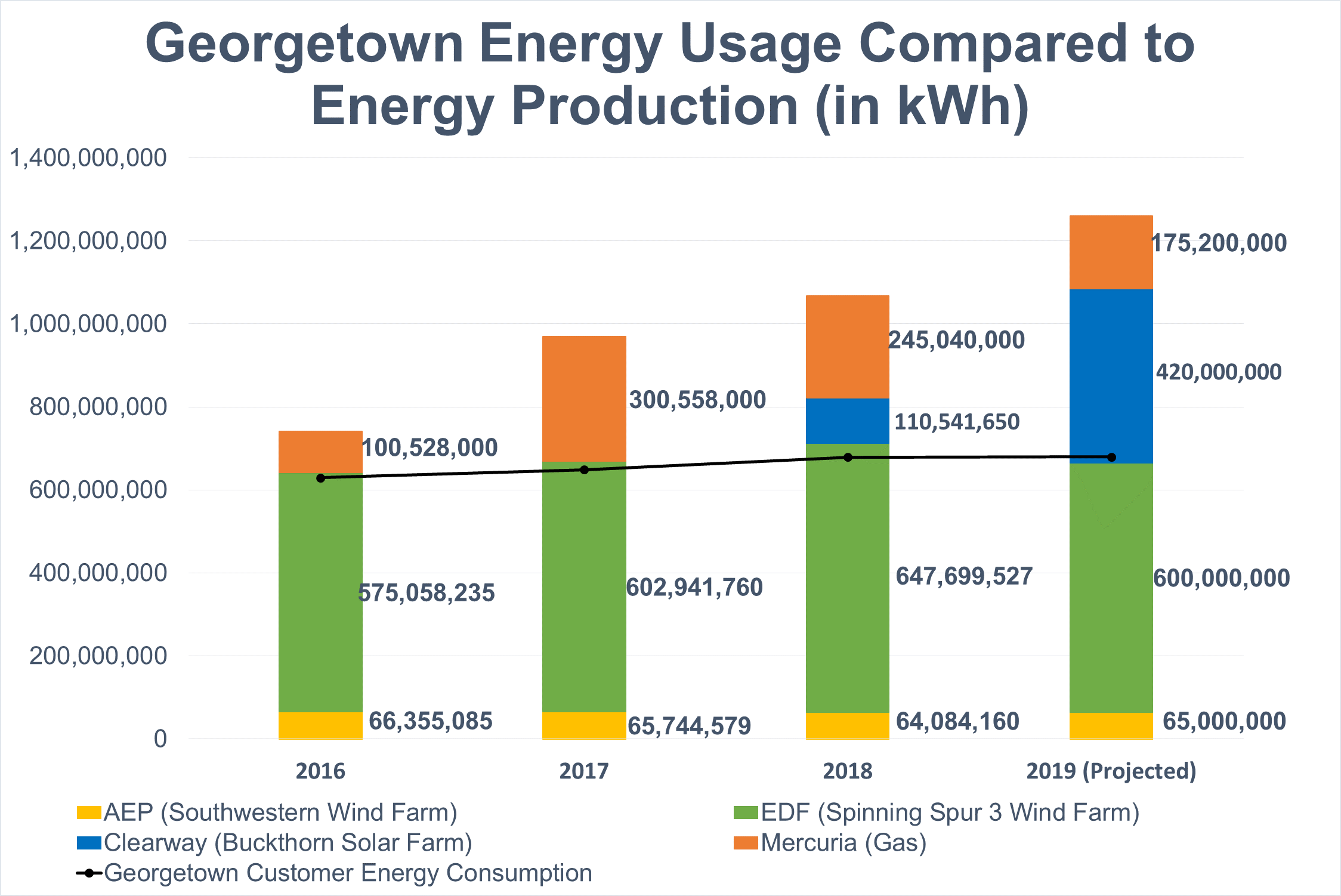Open house meeting on development code changes March 6
The City of Georgetown Planning Department is hosting a public open house on Wednesday, March 6, to provide information on proposed revisions to the Unified Development Code. The open house meeting is 4-6 p.m. in the upstairs community rooms at the Georgetown Public Library, 402 W. Eighth St.
The City’s development code contains rules and guidelines for residential and commercial development in the city, including building heights, zoning, landscape requirements, signs, and rules for special districts. The proposed UDC revisions include Certificate of Appropriateness process revisions, parkland dedication changes, public notification guidelines, and residential design standards.
At the open house, Planning Director Sofia Nelson will give a brief presentation on the items at 4:15 and 5:15 p.m. The remainder of the time at the open house is for interaction with planning department staff members at tables grouped by topic. In addition, written public comments will be accepted at the meeting. Public comments from the meeting will be provided to the UDC Advisory Committee for its meeting on March 13, to the Planning and Zoning Commission for its meeting on March 19, and to City Council for its meeting on March 26.
Fire Station 7 breaks ground March 1
The City of Georgetown will break ground on Fire Station 7 on Friday at 11 a.m. The new station on Highway 29 at Inner Loop will serve areas on the east side of Georgetown as well as areas in Emergency Services District 8.
The contractor selected to build the station is O’Haver Contractors of San Antonio. The total construction cost for the 13,000-square-foot station is $6.3 million. BRW Architects of College Station designed the station, which is projected to be complete in March 2020.
Fire Station 7 will have three truck bays and living quarters for 13 firefighters or medics. The 2019 City budget includes 11 new firefighter/medic positions to staff Fire Station 7. A SAFER grant from the Federal Emergency Management Association will provide $1.7 million in federal funding with a $1 million City match to fund 75 percent of the new positions for the next two years and 35 percent of the cost in the third year. A new cost-sharing agreement between the City and ESD 8 helps cover the costs of providing fire service.
Statement from Atmos Energy regarding natural gas leak on River Bend
Updated on Feb. 28 to include FAQ from Atmos Energy
On Feb. 20, Atmos Energy technicians arrived at 507 River Bend in Georgetown to repair an underground natural gas leak. The Georgetown Fire Department and Atmos Energy issued a precautionary evacuation for sixteen homes on the 2500 block of Oak Lane and sixteen businesses between the 2500 and 2900 block of Williams Drive. Natural gas service has been shut off to customers in this area. Atmos Energy continues to work as quickly and as safely as possible to restore natural gas services.
Atmos Energy appreciates the support of the Fire and Police Departments for their assistance and will continue to work with them throughout this event.
Atmos Energy hosted a meeting to update affected customers at the Sheraton Austin Georgetown Hotel & Conference Center on Feb. 27.
Affected Georgetown residents can contact Atmos Energy using the dedicated customer service line at 1.888.992.8667.
For businesses needing to file a claim, please contact Atmos Energy’s licensed claims adjusters at 817.207.2812.
To speak with an Atmos Energy representative in-person, please visit the Holiday Inn Express, 431 North Interstate 35 between 9 a.m. and 7 p.m.
Safety is Atmos Energy’s core value. As always, anyone who smells natural gas should leave the area immediately and call 911 or the Atmos Energy emergency line at 1.866.322.8667.
To learn more about natural gas leak detection, visit: https://www.atmosenergy.com/safety/recognizing-leak
Atmos Energy has also provided an FAQ for the event.
Why Georgetown is 100 percent renewable
Update: This is a news post from February 2019. The City electric utility discontinued claiming 100 percent renewable status later in 2019 after selling renewable energy credits to generate revenue for the utility.
Reports by a local newspaper and an anti-renewable energy advocacy organization have attempted to question Georgetown’s status as an electric utility that uses 100 percent renewable energy.
Georgetown is credited with the energy it pays to put into the statewide electric grid. Since April 2017, the City has been credited with putting more renewable energy into the grid than Georgetown customers consumed. According to the statewide renewable energy accounting system overseen by the Public Utilities Commission, Georgetown’s customers have been using and paying for all-renewable energy since April 2017.
The Electric Reliability Council of Texas manages the statewide electric grid. ERCOT also tracks renewable energy production for the City. The City is able to determine its energy consumption based on data from customer meters. When determining what percent of an electric utility’s energy portfolio is renewable, the energy produced is compared to the energy consumed. For example, in 2018:
- Georgetown contracted for 1,067 megawatt hours of energy.
- Of that, 822 megawatt hours were from renewable sources.
- Georgetown customers consumed 678 megawatt hours.
In 2018, the total energy consumption by Georgetown customers was less than the total energy produced by renewable sources. That means Georgetown qualifies as being 100 percent renewable in Texas.
The City does not physically use renewable energy every second of every day, but the City does produce more renewable energy than its customers consume. As long as this trend continues, Georgetown will be considered 100 percent renewable. All utilities in Texas base their renewable percentages using this method.
The City has never claimed that the electrons produced by its energy contracts are the same electrons consumed in Georgetown. In fact, a commentary published by the Austin American-Statesman on Aug. 11 states, “[t]he city did not set-out to influence other energy providers or shakeup the state grid. We know that Texas is reliant on traditional sources of energy. We know it is impossible to track an electron produced in West Texas all the way to Georgetown. However, we also know that state attributes all of wind farm and solar farm production with Georgetown.”
Contrary to some reports, the City does not have a policy to be 100 percent renewable in its energy supply. In 2014 and 2015, the City selected wind and solar energy providers because of the long-term cost stability and reduced regulatory risk. The City’s goal is to have 30 percent of its energy from renewables by 2030.
Texas’ Energy Grid
ERCOT manages the flow of electric power for 90 percent of the state’s electric load. This interconnected systems means all sources of energy enter into and are consumed off the statewide grid.
Georgetown is reliant upon energy from the grid to ensure customers receive reliable energy. As a member of ERCOT, the City of Georgetown is obligated to purchase, place, and ultimately provide energy to customers using the ERCOT-managed grid.
The City is under contract to purchase energy from four different providers. The two largest energy providers are Spinning Spur 3, a wind farm near Amarillo, and Buckthorn, a solar farm near Fort Stockton.
The third source of energy is a smaller wind farm operated by American Electric Power (AEP) which primarily covers Southwestern University’s energy needs.
The final energy contract is with Mercuria for natural gas-based energy. This contract was initiated and is a short-term power supply, set to expire in 2022.
The energy production for each of these contracts, as well as Georgetown’s electric consumption, is included below.
As the graphic illustrates, since 2017 Georgetown’s wholesale energy contracts produced more renewable energy than our customers consumed.
Pat Green to headline 20th annual Red Poppy Festival
 This year the City of Georgetown celebrates the 20th anniversary of Red Poppy Festival with special Saturday night headliner Texas Country music singer-songwriter Pat Green.
This year the City of Georgetown celebrates the 20th anniversary of Red Poppy Festival with special Saturday night headliner Texas Country music singer-songwriter Pat Green.
Green started his music career at 18 years old at Texas Tech University and went on to release seven studio albums. His biggest hit “Wave on Wave” reached No. 3 on the Billboard Hot Country Songs chart.
This signature festival on the Most Beautiful Town Square in Texas runs April 26-28 with live music, entertainment, family fun, food, and more than 120 arts and craft vendors.
The Friday night concert features Dysfunction Junction. Other festival highlights include the Red Poppy Parade on Saturday at 10 a.m., and the Car Show on Saturday at 11 a.m.
The official 2019 Red Poppy Festival poster is on sale for $5 starting at 6 p.m. on April 5 at the Visitors Center at 103 W. Seventh St. The poster artist, Devon Clarkson, will be at the Visitors Center April 5 from 6-8 p.m. signing posters. The first 50 posters are free.
For all the details, go to RedPoppyFestival.com.
Candidates file for City Council election in May
The candidate filing period for the City Council District 3, 4 and 7 elections in Georgetown on May 4 ended today at 5 p.m. Incumbent John Hesser and Michael Triggs have filed for District 3, incumbent Steve Fought and Joe Reedholm have filed for District 4, and incumbent Tommy Gonzalez and Jaquita Wilson have filed for District 7.
To see maps of council districts, go to maps.georgetown.org/council-district-maps.
Georgetown City Council members serve three-year terms representing one of seven single-member districts.
The last day to register to vote in the May election is April 4.
Early in-person voting is April 22-30. In the early voting period, voters may cast ballots at any early voting location in Williamson County.
On election day on May 4, voters may cast ballots at any vote center location in Williamson County. Polling places, dates, and times will be listed at wilco.org/elections.
Open house meeting for Austin Avenue Bridge railings
 The City of Georgetown Public Works Department will hold an open house meeting for public input on the Austin Avenue bridges rehabilitation project. The focus of the meeting is to get public input on options for railing designs on the bridges. The open house meeting is 6-8 p.m. on Feb. 27 in the Hewlett Room at the Georgetown Public Library, 402 W. Eighth St.
The City of Georgetown Public Works Department will hold an open house meeting for public input on the Austin Avenue bridges rehabilitation project. The focus of the meeting is to get public input on options for railing designs on the bridges. The open house meeting is 6-8 p.m. on Feb. 27 in the Hewlett Room at the Georgetown Public Library, 402 W. Eighth St.
For the past three years, a project team including the Texas Department of Transportation and the City of Georgetown has been assessing options for addressing structural and functional problems with the Austin Avenue bridges. The structures which span the north and south forks of the San Gabriel River were built in 1940. At three public meetings since 2016, the project team has requested public input on options for the bridges. Twelve options were initially considered as part of the federal and state review process. The project team is now evaluating an option to rehabilitate the existing bridges and add a separate bicycle and pedestrian bridge to the east of the existing vehicle bridges.
To find out more about the Austin Avenue bridges project, go to transportation.georgetown.org/austin-avenue-bridges.
Airport runway rehabilitation to begin in February
 Beginning in February, the City will start rehabilitation work on one of the Georgetown Municipal Airport’s runways.
Beginning in February, the City will start rehabilitation work on one of the Georgetown Municipal Airport’s runways.
The work includes reconstructing a portion of Runway 18-36, the airport’s main north-south runway. The project also includes repaving the remaining portions, as well as striping and marking the runway. The runway will be closed during most of the construction period, and Runway 11-29 will be closed intermittently during construction.
The project is expected to be completed in late May.
The schedule is subject to change due to weather conditions. Updates on runway closures will be made at airport.georgetown.org.
Land investment firm relocating to new downtown development
 WBW Land Investments will relocate to the new Riverplace development in downtown Georgetown at Second Street and Austin Avenue.
WBW Land Investments will relocate to the new Riverplace development in downtown Georgetown at Second Street and Austin Avenue.
The investment group includes WBW Construction, WBW Development, and Yalgo Engineering and is focused on developing starter and first move-up homes throughout Central and Southwest Texas.
“After more than 30 years running our business from Killeen, I am looking forward to moving our entire company to the City of Georgetown, where we expect to be a part of the community for many generations to come,” said Bruce Whitis, CEO of WBW Development and Yalgo Engineering. “We considered a number of alternatives and we were ultimately attracted by the vibrancy of downtown Georgetown and the opportunity to be a part of its future.”
Company leadership said they decided to relocate to Georgetown to help attract talent and grow their employee base.
“We appreciate all the hard work of City staff, and the generosity and vision of the leadership of the City of Georgetown, as we embark on our plans for a new headquarters building for WBW Development and Yalgo Engineering in the historic district,” WBW Development Vice President David L. Peter said.
The company is partnering in the mixed-use development that will include office, residential, retail, covered parking, and outdoor amenities, which fits in with the type of development called out in the City’s Downtown Master Plan.
“Every two years, the City conducts a citizen survey, and one of the top needs identified in the 2018 survey is continuing to recruit quality businesses and employment opportunities to our community,” Mayor Dale Ross said. “WBW is a great match for Georgetown and we are excited to have another high-quality corporate headquarters relocate to Georgetown.”
At its Feb. 12 meeting, City Council approved an agreement that includes up to $320,000 for infrastructure improvements and job creation over six years.
According to the agreement, the company is expected to create 40 jobs with an average salary of $90,000 a year and invest $3 million in capital improvements.
City seeking proposals for third-party review of energy management
The City of Georgetown is seeking proposals for both managing the City’s energy portfolio and for a comprehensive review of the City’s management practices related to purchasing and managing energy.
Georgetown is under contract to purchase power from four different providers. The two largest energy providers are Spinning Spur 3, a wind farm near Amarillo, and Buckthorn, a solar farm near Fort Stockton. The third source of energy is a smaller wind farm operated by American Electric Power which primarily covers Southwestern University’s energy needs.
The final energy contract is with Mercuria for natural gas-based energy. It was intended as a short-term power supply and is set to expire in early 2022.
The City’s original strategy to contain costs by contracting for fixed-priced, renewable energy was intended to mitigate the risk of spiking energy prices.
Securing long-term energy contracts that provide more energy than customers currently need is a standard practice among city-owned utilities. As a fast-growth community, these contracts allow the City to grow into increased energy demand. The contracts also reduce the number of times the City has to buy energy in a potentially volatile marketplace.
It is important to note that it is not the type of energy the City has contracted for, but the amount of energy the City is contracted to purchase, that is the current challenge. The crux of the issue hinges on the large amount of energy the City must clear to the market that is not currently consumed in Georgetown.
When the price of energy decreases, the City is still obligated to pay the price for energy it secured in the contracts. Any energy that is not used by Georgetown’s electric utility customers is cleared to a statewide marketplace.
At the same time, the utility is seeing a drop in consumer demand which is largely driven by conservation efforts, energy-saving technologies, and more energy-efficient new construction. Due to these factors, the City ended the 2018 fiscal year with a $6.84 million shortfall in the electric fund, leaving a fund balance of $1.97 million.
“Looking back, the focus on ensuring adequate supply to mitigate the high-price of energy that was forecast overshadowed the consequences of having excess energy in a depressed market,” City Manager David Morgan said. “The City did not manage this risk well. We are focused on changing the way we do business as it relates to managing our energy portfolio.”
“Our current process for managing our energy is not achieving our goals,” General Manager of Utilities Jim Briggs said. “Along with selling a portion of the excess energy to a third-party, we look forward to working with industry experts in identifying ways to better manage the energy portfolio day-to-day and putting in place policies and procedures that reduce our financial risks moving forward.”
Both requests for proposals can be found on the City’s website at purchasing.georgetown.org. Additional information about energy costs in Georgetown can be found at gus.georgetown.org/electric.
Interested parties may submit questions regarding the solicitations to nicole.abrego@georgetown.org. The deadline to submit a proposals for the review of the City’s management practices is 2 p.m. on Feb. 21. The deadline to submit questions is 5 p.m. on Feb. 15.
The deadline to submit a proposals to review managing the City’s energy portfolio is 2 p.m. on March 7. The deadline to submit questions is 5 p.m. on Feb. 22.
In 1910, Georgetown voters approved a bond to build the Georgetown Light and Water Works plant on Ninth Street. Over the past century, Georgetown Utility Systems continues to be a highly reliable, community-owned and -operated electric utility. It is owned by the people of Georgetown and it invests directly in the community.
“Having a community-owned utility has proven incredibly valuable over the past 100 years,” Briggs said. “As the City works through this current challenge, we remain committed to ensuring the stability of this asset for years to come.”


.png)






